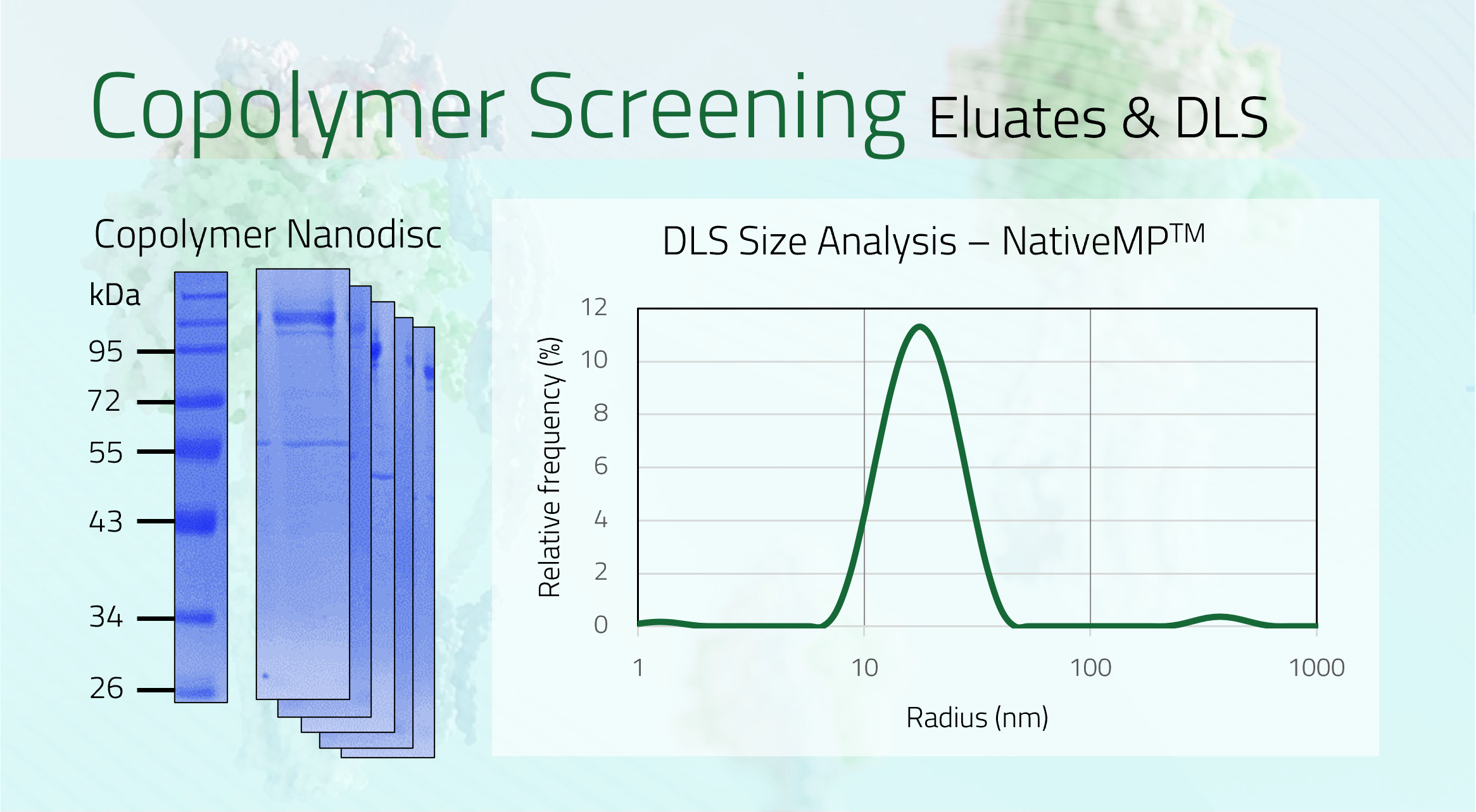Scavenger receptor cysteine-rich type 1 protein M130 (CD163, M130)
Order number: 70121
Description
Introducing our off-the-shelf, full-length, active, and native Scavenger Receptor Cysteine-Rich Type 1 Protein M130, also known as CD163. This essential membrane protein plays a critical role in the immune system by mediating the clearance of hemoglobin-haptoglobin complexes, making it a key player in anti-inflammatory processes.
Our CD163 protein is solubilized and stabilized using our innovative NativeMP™ platform. This ensures that the protein retains its native structure and full biological activity, making it ideal for research applications in immunology, inflammation, and drug discovery.
Applications:
- Screening/Validation
- Biologics Development
- Structure Determination
- Small Molecule Drug Development
The protein delivered can be used for these specific applications. When ordering, please indicate which applications you intend to use the protein for in the contact form to ensure the best results.
For more details, explore our solubilization database.

Datasheets
Upon ordering, you will receive the corresponding datasheets and the Certificate of Analysis (CoA).
| Feature | |
|---|---|
| Alternative names | CD163, M130 |
| UniProt Number | Q86VB7 |
| Protein class | Receptor |
| Original host | Homo sapiens |
| Expression system | HEK293 |
| Sequence, One-Letter Code | MSKLRMVLLEDSGSADFRRHFVNLSPFTITVVLLSACFVTSSLGGTDKELRLVDGENKCSGRVEVKVQEEWGTVCNNGWSMEAVSVICNQLGCPTAIKAPGWANSSAGSGRIWMDHVSCRGNESALWDCKHDGWGKHSNCTHQQDAGVTCSDGSNLEMRLTRGGNMCSGRIEIKFQGRWGTVCDDNFNIDHASVICRQLECGSAVSFSGSSNFGEGSGPIWFDDLICNGNESALWNCKHQGWGKHSNCDHAEDAGVICSKGADLSLRLVDGVTECSGRLEVRFQGEWGTICDDGWDSYDAAVACKQLGCPTAVTAIGRVNASKGFGHIWLDSVSCQGHEPAIWQCKHHEWGKHYCNHNEDAGVTCSDGSDLELRLRGGGSRCAGTVEVEIQRLLGKVCDRGWGLKEADVVCRQLGCGSALKTSYQVYSKIQATNTWLFLSSCNGNETSLWDCKNWQWGGLTCDHYEEAKITCSAHREPRLVGGDIPCSGRVEVKHGDTWGSICDSDFSLEAASVLCRELQCGTVVSILGGAHFGEGNGQIWAEEFQCEGHESHLSLCPVAPRPEGTCSHSRDVGVSCSRYTEIRLVNGKTPCEGRVELKTLGAWGSLCNSHWDIEDAHVLCQQLKCGVALSTPGGARFGKGNGQIWRHMFHCTGTEQHMGDCPVTALGASLCPSEQVASVICSGNQSQTLSSCNSSSLGPTRPTIPEESAVACIESGQLRLVNGGGRCAGRVEIYHEGSWGTICDDSWDLSDAHVVCQQLGCGEAINATGSAHFGEGTGPIWLDEMKCNGKESRIWQCHSHGWGQQNCRHKEDAGVICSEFMSLRLTSEASREACAGRLEVFYNGAWGTVGKSSMSETTVGVVCRQLGCADKGKINPASLDKAMSIPMWVDNVQCPKGPDTLWCPSSPWEKRLASPSEETWITCDNKIRLQEGPTSCSGRVEIWHGGSWGTVCDDSWDLDDAQVVCQQLGCGPALKAFKEAEFGQGTGPIWLNEVKCKGNESSLWDCPARRWGHSECGHKEDAAVNCTDISVQKTPQKATTGRSSRQSSFIAVGILGVVLLAIFVALFFLTKKKRRQRQRLAVSSRGENLVHQIQYREMNSCLNADDLDLMNSSENSHESADFSAAELISVSKFLPISGMEKEAILSHTEKENGNLGSSGTETSQVAPA |
| Affinity tags | Rho1D4-tag (C-terminal) |
| Size (excluding additional elements) | 1156 amino acids, 126 kDa |
| Concentration | 0.4 - 0.7 mg/ml |
| Purity | >90%, determined via SDS-PAGE |
| Purification process | 2-step purification |
| Shipping | Shipment is carried out on dry-ice for temperature stability to ensure the integrity of the product. |
| Function | Acute phase-regulated receptor involved in clearance and endocytosis of hemoglobin/haptoglobin complexes by macrophages and may thereby protect tissues from free hemoglobin-mediated oxidative damage. May play a role in the uptake and recycling of iron, via endocytosis of hemoglobin/haptoglobin and subsequent breakdown of heme. Binds hemoglobin/haptoglobin complexes in a calcium-dependent and pH-dependent manner. Exhibits a higher affinity for complexes of hemoglobin and multimeric haptoglobin of HP*1F phenotype than for complexes of hemoglobin and dimeric haptoglobin of HP*1S phenotype. Induces a cascade of intracellular signals that involves tyrosine kinase-dependent calcium mobilization, inositol triphosphate production and secretion of IL6 and CSF1. Isoform 3 exhibits the higher capacity for ligand endocytosis and the more pronounced surface expression when expressed in cells.; After shedding, the soluble form (sCD163) may play an anti-inflammatory role, and may be a valuable diagnostic parameter for monitoring macrophage activation in inflammatory conditions. |
| PubMed ID | 8370408, 10403791, 16541075, 15489334, 10066432, 10577520, 10648003, 11298324, 11196644, 12296867, 12208511, 12377940, 15478309, 15448162, 15075364, 16335952, 16434690, 19159218, 19139490, 24275569 |
Lab Results






